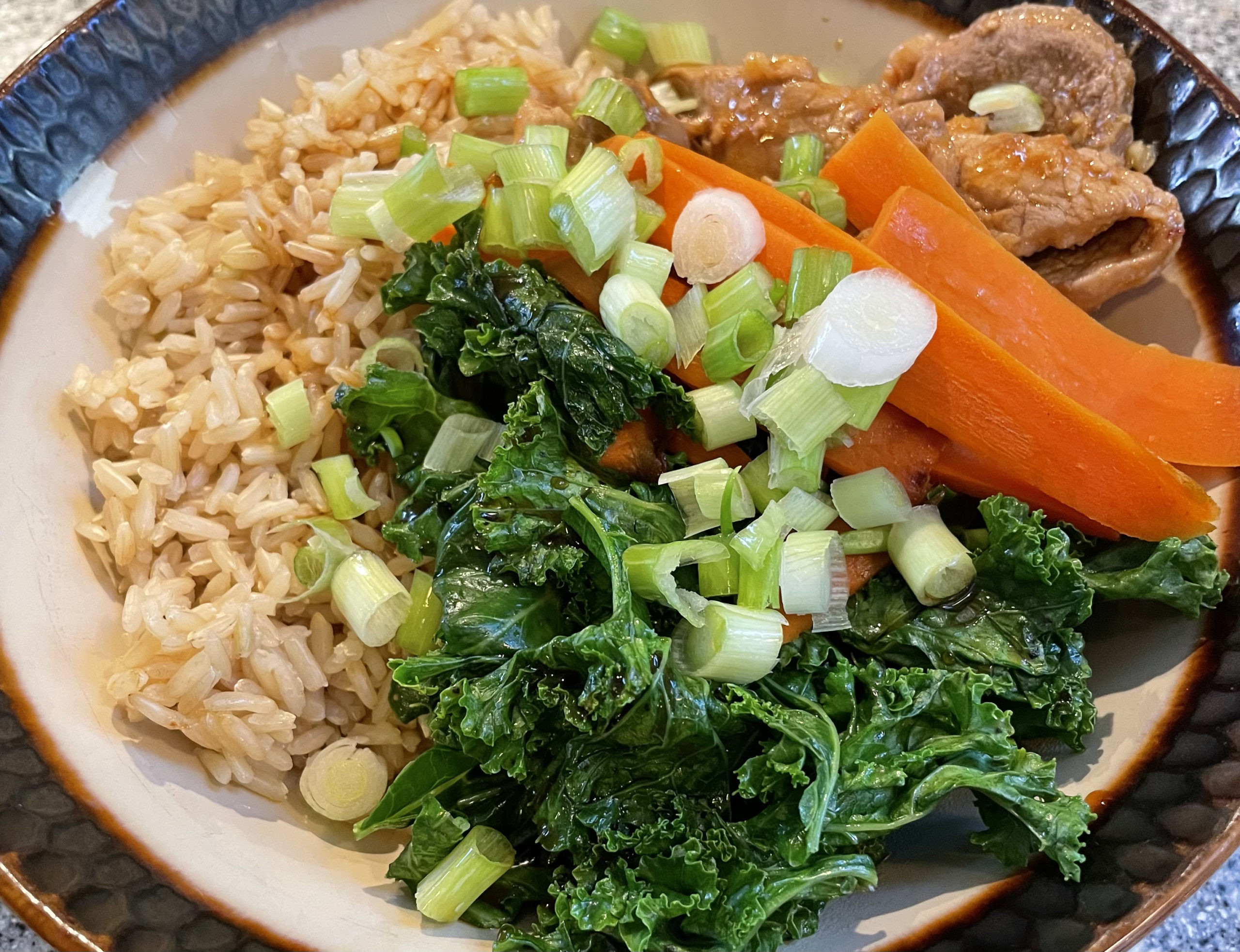
Servings: 4 servings
Ingredients
- 1¼ lb. pork tenderloin
- 3 Tbsp. hot chili paste such as sambal oelek
- 2 Tbsp. light brown sugar
- 1 inch ginger peeled, finely graded
- 1 clove garlic minced
- 3 Tbsp. soy sauce divided
- 2¼ tsp. toasted sesame oil divided
- 3 Tbsp. vegetable oil divided
- kosher salt
- 2 medium carrots peeled, thinly sliced
- 1 bunch collard greens or Tuscan kale ribs and stems removed, leaves sliced
- 1 Tbsp. rice vinegar
- 4 Cup white rice steamed
- 1 bunch scallions thinly sliced
- gochujang for serving
Instructions
- Freeze pork tenderloin until firm around the edges, 30–45 minutes. While pork is freezing start rice.
- Combine chili paste, brown sugar, ginger, garlic, 2 Tbsp. soy sauce, and 2 tsp. sesame oil in a resealable plastic bag (or medium bowl if you aren’t feeling the plastic). Thinly slice pork with a long sharp knife. Add to marinade, seal bag, and knead to thoroughly coat. Let sit at least 10 minutes and up to 2 hours.
- Heat 1 Tbsp. vegetable oil in a large nonstick skillet over medium-high. When oil is very hot, add half of pork in a single layer; season very lightly with salt. Cook, undisturbed, increasing heat to high if needed, until dark brown underneath, about 1 minute. Toss pork, breaking up with tongs or a wooden spoon, and continue to cook, tossing, until cooked through, about 1 minute more. Transfer to a plate. Repeat with another 1 Tbsp. vegetable oil and remaining pork (you may want to briefly remove skillet from heat when adding more oil so it doesn’t spatter). Wipe out skillet.
- Heat remaining 1 Tbsp. vegetable oil in skillet over medium-high. Add carrots and cook in a single layer, undisturbed, until beginning to soften and brown underneath, about 2 minutes. Add collard greens and toss to wilt. Cook, tossing occasionally, until vegetables are crisp-tender, about 2 minutes.
- Combine vinegar and remaining 1 Tbsp. soy sauce and ¼ tsp. sesame oil in a small bowl.
- To serve, divide rice among bowls and arrange pork and vegetables over. Top each with some scallions and a spoonful of gochujang; drizzle with dressing.
Notes
For more vegetables, this recipe can quite easily take more kale and carrots. Doubling the marinade provides a sauce to go over the dish.
Adapted from Bon Apetit: Travel Issue
Tried this recipe?Let us know how it was!